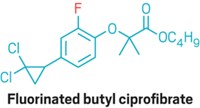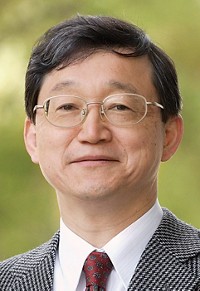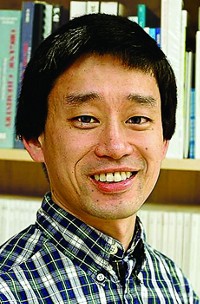Advertisement
Grab your lab coat. Let's get started
Welcome!
Welcome!
Create an account below to get 6 C&EN articles per month, receive newsletters and more - all free.
It seems this is your first time logging in online. Please enter the following information to continue.
As an ACS member you automatically get access to this site. All we need is few more details to create your reading experience.
Not you? Sign in with a different account.
Not you? Sign in with a different account.
ERROR 1
ERROR 1
ERROR 2
ERROR 2
ERROR 2
ERROR 2
ERROR 2
Password and Confirm password must match.
If you have an ACS member number, please enter it here so we can link this account to your membership. (optional)
ERROR 2
ACS values your privacy. By submitting your information, you are gaining access to C&EN and subscribing to our weekly newsletter. We use the information you provide to make your reading experience better, and we will never sell your data to third party members.
Synthesis
ACS Award in Organometallic Chemistry
January 15, 2007
| A version of this story appeared in
Volume 85, Issue 3
Sponsored by the Dow Chemical Co. Foundation
David Milstein of the Weizmann Institute of Science, Rehovot, Israel, has long been recognized by his peers as a powerhouse in the field of organometallic chemistry. He is now being honored for his myriad innovative contributions.
Milstein is best known for his pioneering research on metal-mediated activation and functionalization of very strong chemical bonds. He and his coworkers have developed many group 8, 9, and 10 transition-metal complexes with specifically designed ligands that have proven useful to activate strong C-C, C-H, C-F, N-H, and O-H bonds.
"David is one of the most innovative and productive scientists working in the area of organometallic chemistry in the world today," notes Robert G. Bergman, a chemistry professor at the University of California, Berkeley.
"No one has done more than Milstein to elucidate the factors that control these types of demanding chemical processes," adds chemistry professor Harry B. Gray of California Institute of Technology. "All together, his work on the activation of inert substrates represents a landmark in organometallic chemistry."
Milstein, 59, received a Ph.D. in chemistry from Hebrew University of Jerusalem, in Israel. He carried out postdoctoral research in the U.S. at Colorado State University and at the University of Iowa. In 1979, Milstein joined DuPont Central Research & Development in Wilmington, Del., where he became a group leader in the homogeneous catalysis area. In 1987, he took up an academic position at the Weizmann Institute, where he is now director of the Kimmel Center for Molecular Design.
Milstein's important contributions to organometallic chemistry began early in his career. While a postdoc, Milstein and his adviser, John K. Stille, discovered the Stille coupling reaction that is now widely used in the synthesis of pharmaceuticals. It's a useful method for new C-C bond formation that uses a palladium catalyst to couple an organic halide with an organotin compound.
His subsequent pioneering contributions include a 1993 Nature paper describing insertion of a rhodium complex into a strong C-C bond using a pincer-type substrate that helps draw the metal center to the hard-to-access C-C bond (Nature 1993, 364, 699). This paper is considered a classic for establishing a general strategy for C-C activation in homogeneous systems.
Another groundbreaking piece of work was Milstein's 1994 Science paper on activation of the notoriously inert C-F bond in reactions of fluorinated benzenes with silanes or hydrogen using a rhodium catalyst (Science 1994, 265, 359). Milstein also demonstrated that arranging a metal complex in an ordered monolayer can have remarkable effects on catalysis (Science 1997, 278, 2100).
Milstein has also contributed many pathbreaking papers on N-H and O-H activation, including insertion of iridium complexes into the N-H bond of ammonia and the O-H bond of water. Another example is his recently reported direct conversion of primary alcohols to esters and H2 using a pincer-type ruthenium catalyst (J. Am. Chem. Soc. 2005, 127, 10840).
His group also pioneered methods for catalytic activation and functionalization of aryl chlorides and of arenes. Other accomplishments, from his work on metal-promoted dearomatization, include synthesis of the first metallaquinone (a quinone in which one of the oxygen atoms has been replaced by ruthenium) and generation and controlled release of biologically active quinone methides. Yet another example was the use of a sulfur ylide instead of a diazo compound as a safer precursor to prepare transition-metal carbene catalysts.
"Milstein's highly impressive achievements and contributions spanning his scientific career have already left an everlasting impact on chemistry," comments Ronny Neumann, a chemistry colleague at Weizmann.
The award address will be presented before the Division of Organic Chemistry.






Join the conversation
Contact the reporter
Submit a Letter to the Editor for publication
Engage with us on Twitter